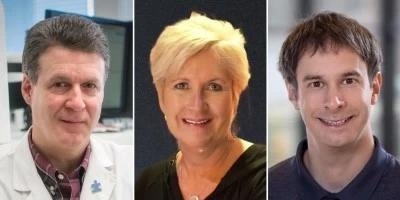At The Hospital for Sick Children (SickKids), scientists have untangled new genes and genetic changes linked to autism spectrum disorder (ASD) in the biggest autism whole genome sequencing analysis so far. This offers better comprehension of the “genomic architecture” that props up this disorder.
 Drs Scherer, Lewis, and Trost. Image Credit: The Hospital for Sick Children
Drs Scherer, Lewis, and Trost. Image Credit: The Hospital for Sick Children
The study, reported currently in Cell, utilized whole genome sequencing (WGS) to analyze the full genomes of more than 7,000 individuals with autism as well as an extra 13,000 siblings and family members.
The team discovered 134 genes associated with ASD and found a range of genetic changes, most especially gene copy number variations (CNVs). This is probably to be linked to autism. This includes ASD-associated rare variants in nearly 14% of participants with autism.
The most of data were withdrawn from the Autism Speaks MSSNG database, the world’s biggest autism whole genome dataset. This offers autism scientists free, open access to thousands of sequenced genomes.
By sequencing the entire genome of all participants, and with deep involvement from the participating families in MSSNG on forming our research priorities, we maximize the potential for discovery and allow analysis that encompasses all types of variants, from the smallest DNA changes to those that affect entire chromosomes.”
Dr Stephen Scherer, Senior Scientist, Genetics & Genome Biology, The Hospital for Sick Children
Scherer is also the director of the McLaughlin Centre at the University of Toronto.
Dr Brett Trost, lead author of the paper and a Research Associate in the Genetics & Genome Biology program at SickKids, points out the usage of WGS enabled scientists to unravel variant types that would not have differently been detectable.
Such variant types consist of complicated rearrangements of DNA, as well as tandem repeat expansions. This is a breakthrough aided by recent SickKids research on the link between DNA and autism segments that are repeated many times. Also, the role of the maternally inherited mitochondrial DNA was analyzed in the study and discovered to account for 2% of autism.
Also, the study hints at significant nuances in autism genetics in families having only one individual with autism than with families that consist of multiple individuals with autism, called multiplex families.
Astonishing to the group was the so-called “polygenic score”—an estimation of the probability of an individual having autism. This has been evaluated by collecting the effects of thousands of common variants across the genome—was not higher amongst multiplex families.
This suggests that autism in multiplex families may be more likely to be linked to rare, highly impactful variants inherited from a parent. Because both the genetics and clinical traits associated with autism are so complex and varied, large data sets like the ones we used are critical to providing researchers with a clearer understanding of the genetic architecture of autism.”
Dr Brett Trost, Study Lead Author and Research Associate, Genetics & Genome Biology Program, The Hospital for Sick Children
The research group states the study data can help extend inquiries into the range of variants that might be associated with ASD, as well as measures to better comprehend contributors to the 85% of autistic individuals for which the genetic cause remains undecided.
In an associated study of 325 families with ASD from Newfoundland reported this same month in Nature Communications, Dr Scherer’s group discovered that combinations of natural, rare-inherited, and polygenic genetic factors merging in the same individual can possibly result in various sub-types of autism.
Collectively, these latest findings represent a massive step forward in better understanding the complex genetic and biological circuitry linked with ASD. This rich data set also offers an opportunity to dive deeper into examining other factors that may determine an individual’s chance of developing this complex condition to help individualize future treatment approaches.”
Dr Suzanne Lewis, Geneticist and Investigator, BC Children’s Hospital Research Institute
Lewis diagnosed several of the families registered in the study.
Source:
Journal reference:
Trost, B., et al. (2022) Genomic architecture of autism from comprehensive whole-genome sequence annotation. Cell. doi.org/10.1016/j.cell.2022.10.009.